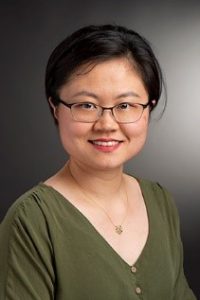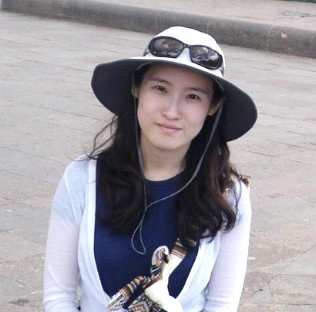September 13, 2019
Smart Contracts Augmented with Learning and Semantics
Abstract: Decentralized Ledger Technology (DLT) based applications employ smart contracts to execute a particular set of rules in a trusted way. Well-designed smart contract languages are Turing-Complete and have deterministic behavior. However, smart contracts, when deployed on the decentralized ledger, are also immutable, thus cannot be changed when faced with a situation unforeseen by developers. Currently, much of the successful utilization of smart contracts are in financial applications where the amounts can be quantified, and the conditions are evident at the outset. But as DLTs are increasingly applied in many non-monetary domains, such as in Internet of Things, or healthcare applications where the variables may not be known in advance, or are dependent on AI algorithms that are not deterministic at the time of smart contract initiation, programming constructs similar to those used in financial applications may be extremely restrictive. Thus, we require better expressivity and flexibility in the contract to account to the fuzziness of such real-world inputs, while ensuring the usual cryptographic guarantees. In this talk, I will describe the work done in the Smart Contracts augmented with Learning and Semantics (SCALES) project that is leading the way to “smarter contracts” that addresses these issues.
Bio: Oshani Seneviratne is the Director of Health Data Research at the Institute for Data Exploration and Applications (IDEA) at the Rensselaer Polytechnic Institute (RPI). At Rensselaer IDEA, Oshani leads the Smart Contracts Augmented with Analytics Learning and Semantics (SCALeS) project. The goal of this project is to predict, detect, and fix initially unforeseen situations in smart contracts that are deployed on the blockchain-based systems utilizing novel combinations of machine learning, program analysis, and semantic technologies. Oshani is also involved in the Health Empowerment by Analytics, Learning, and Semantics (HEALS) Project, where she oversees the research operations targeted at the characterization and analysis of computational medical guidelines for chronic diseases such as diabetes. Prior to Rensselaer, Oshani worked at Oracle specializing in distributed systems, provenance and healthcare-related research. Oshani obtained her Ph.D. in Computer Science from Massachusetts Institute of Technology (MIT) in 2014 under the supervision of Sir Tim Berners-Lee, the inventor of the World Wide Web. At MIT, Oshani conducted research on Accountable Systems for the Web, and she is the inventor of a novel web protocol called HyperText Transfer Protocol with Accountability (HTTPA), that has demonstrated its effectiveness in several domains including electronic health care records transfer, and intellectual property protection in web-based decentralized systems.
At MIT, Oshani conducted research on Accountable Systems for the Web, and she is the inventor of a novel web protocol called HyperText Transfer Protocol with Accountability (HTTPA), that has demonstrated its effectiveness in several domains including electronic health care records transfer, and intellectual property protection in web-based decentralized systems.
September 20, 2019.
Social Engineering Beyond Phishing; Ambient Tactical Deception (ATD)
Abstract: It is an ordinary day working from home, and you are part of a team that regularly interacts over email. Since this is your main line of communication, the company trained you to spot phishing emails. You’ve learned to skip over emails that exhibit obvious phishing red flags: suspicious links, attachments, grammar errors, etc. You just received an email from your boss about a major project on which you play a critical role. The email is more demanding than usual, even impolite. Your boss has generally seemed more upset with you lately, so you approach them to express your concerns and clear the air. Your boss is not receptive to your feedback. This causes a rift that impacts your working relationship, compromising the effectiveness and productivity of the entire team. You have been a victim of an Ambient Tactical Deception (ATD) attack. We developed and tested a proof-of-concept social engineering attack targeting web-based email users. The attack is executed through a malicious browser extension that acts as a man-in-the-middle and reformats the textual content to alter the emotional tone of the email. The objective of ATD is not stealing credentials or data. ATD seeks to coerce a user to the attacker’s desired behavior via the subtle manipulation of trusted interpersonal relationships. It works on Facebook, Twitter, Reddit, you name it.

Bio: Filipo Sharevski is a cybersecurity researcher and tactician who constructs and manipulates reality as it unfolds across the cyber-physical spaces and within power structures, particularly focused on social engineering, reality interventions, resistances, and low-intensity cyberwarfare. His academic work has been published internationally, including a book on cellular network forensics, cybersecurity curriculum under the Cybersecurity National Action Plan (CNAP), and academic articles in renewed cybersecurity journals and conferences. His research areas include: Ambient Tactical Deception; malicious user experience design; secure design, divergence and deception in human communication and interaction; psychological operations; cyberwarfare; behavioral security in cellular and cyber-physical systems. Dr. Sharevski holds a PhD in Interdisciplinary Cybersecurity from Purdue University, West Lafayette. He is currently an Assistant Professor in the College of Computing and Digital Media at DePaul University, where he co-founded and co-Directs Divergent Design Lab. He also leads the 5G De-Mobile Lab focused on behavioral security and forensics research in future cellular networks.
September 27, 2019
Human-Robot Team: Computational and experimental approach to design assistive methods using wearable devices
Reduced balance is a critical challenge for individuals with disabilities, most notably in affecting their ability to walk. Advances in wearable devices, robotic exoskeletons, or prostheses have opened great potential to assist those individuals. However, one central challenge remains: how to control these sophisticated devices, while also taking into account human responses. For, humans often respond unintuitively when assisted. Dr. Kim has been working on developing human-in-the-loop control using a combination of theoretical and experimental methods to solve this problem.
Dr. Kim developed the first balance-assistance controller that successfully reduced balance-related efforts of steady-state walking in a wearable device. This result was achieved by modulating ankle push-off work at each step in an ankle-foot prosthesis emulator, while directly including a subject’s balance state in a control strategy. This control idea was initially developed from her theoretical study using a numerical model of amputee walking.
To maximize assistance benefit, she developed a systematic, efficient individualization method, human-in the-loop online optimization, for a textile-based soft robotic exoskeleton. Her approach used the physiological signal expressed during a human subject’s effort (metabolic cost) to optimize the control parameters of the wearable device. By utilizing Bayesian optimization – sample-efficient, noise-tolerant, and global optimization methods – she has demonstrated that an optimal parameter can be found within 30 minutes, with a great reduction in metabolic cost. In this seminar, she will discuss the challenges and opportunities offered by the human-in-the-loop assistance controller and online optimization method she has developed. One exciting future direction will be to design controllers that take into account non-steady-state dynamics to improve mobility and comfort. The methodology, designing and experimentally evaluating computational approaches, also holds promise for designing even more effective assistance methods.
About Dr. Myunghee Kim: Myunghee Kim joined as an assistant professor at UIC Department of Mechanical and Industrial Engineering. Myunghee Kim’s primary research focus is the development of assistive robotic devices for improving mobility and quality of life through integrative approaches of numerical dynamic models, machine learning techniques, experimental testbeds, and controlled human-subject experiments. She received her M.S. degrees from Korea Advanced Institute of Science (KAIST) and Technology and Massachusetts Institute of Technology (MIT), a Ph.D. degree from Carnegie Mellon University and held a post-doctoral appointment at Harvard University. She was a control engineer in humanoid robotics at Samsung. She received Best Paper Award in the Medical Devices category at International Conference on Robotics and Automation (ICRA) 2015. Recently, her group work on a data-driven model estimation method resulted in the Best Poster Award at the US-Korea Conference (UKC) 2019.
October 04, 2019
Title: Combinatorics of Patterns
Abstract: Combinatorics is the study of discrete structures. Patterns are a rich area of combinatorial research, particularly permutation patterns. There are several main avenues for this work, with implications for related fields including algebra, geometry, and computer science. We will introduce these ideas and sample results, and hint at some of their implications.
Bio: Bridget Tenner was born in Chicago, Illinois. She received her AB and AM degrees from Harvard University and her PhD from MIT, advised by Richard Stanley. She has been at DePaul University since 2007, and was promoted to Professor in 2017. Professor Tenner is a combinatorialist, focusing on enumerative, algebraic, and topological combinatorics. Her mathematical specialties relate to structural analyses of Coxeter groups and permutation patterns, and her interdisciplinary work involves redistricting issues and voting procedures.

October 11, 2019
Title: Human-Machine Interaction for Mental Health Care
Abstract: Advances in assistive technology have led to widespread deployment of interactive systems to help improve people’s health conditions. Current interactive technologies, such as robots and virtual reality, are mainly for physical health, while the high controllability, precision, and automation also provide great opportunities for mental health care. In this talk, I will first present my research about how to use human-machine interaction to improve the assessment and intervention for children with Autism Spectrum Disorder (ASD). This talk will cover both human-robot interaction and human-computer interaction technologies that have led to success. I will introduce the design, development, and validation of intelligent systems targeting core deficits in ASD. It is important to note that the engineering cores in human-machine interaction is not limited to a certain disease. Therefore, I will also introduce how to generalize interaction technology to serve different populations. In particular, robot-mediated physical and cognitive exercise for older adults will be discussed. Finally, the challenges and opportunities in designing intelligent systems for and beyond mental health care will be discussed together with important future directions
Bio: Dr. Zhi Zheng is an Assistant Professor of Biomedical Engineering at Rochester Institute of Technology (RIT). She received her B.S. (2008) in Biomedical Engineering and her M.S. (2011) in Pattern Recognition and Intelligent Systems from Xidian University. Then she received her M.S. (2013) and Ph.D. (2016) in Electrical Engineering from Vanderbilt University. Currently, Dr. Zheng leads the Intelligent Interaction Research (I2R) Lab at RIT. Her research emphasizes the integration of robotics, virtual reality, machine learning, and psychology, with a focus on machine intelligence. The overarching goal of her research is to explore new paradigms of human-machine interaction (HMI) to assist people in their daily life. Her research is highly interdisciplinary and transformative, as it crosses the boundaries between computer science, engineering, psychology, and cognitive science. Collaborating with experts in clinical psychology, nursing, social welfare, and medical informatics, Dr. Zheng has developed both human-robot interaction (HRI) systems and human-computer interaction (HCI) systems, mainly for children with Autism Spectrum Disorders (ASD) and older adults with mild cognitive impairments (MCI). She also has extended experiences (~ 350 sessions) on running human subject experiments to validate the efficacy of assistive technology.

October 18, 2019
Title: Shapes Of Emergence: Experimental Physics And New Media Art
Abstract: Scientists and artists have always been fascinated by the variety of shapes and patterns that compose our visual world, and have naturally built representations of it, either poetic or realistic. Whether in the development of perspective painting with geometry, of virtual reality in digital art with military simulation technologies, or of satellite communication and the self-driving car inspired from science fiction, art and science have constantly influenced one another. In this talk, I will present Shapes Of Emergence, my recent and ongoing work as a physicist in an art residency at MANA Contemporary and the University of Chicago, where the frontier between my artistic and scientific sensibilities are blurred. In Shapes of Emergence, I explore the duality between nature and the artist’s workflow via projected visual narratives with live self-emergent shape experiments. Here, the laws of nature impose their own time frame, pushing the artist to observe and “curate” punctually, as opposed to building iteratively. This combination of artistic and naturalist approaches can drive the development of novel technologies and scientific knowledge, bringing an alternative and complementary workflow for academic research and science communication.
Speaker: Baudouin Saintyves is a physicist and a visual artist. He is currently an artist in residence at High Concept Labs in MANA Contemporary, Chicago (Institutional Incubation Program), and at the University of Chicago in the James Franck Institute (Jaeger Lab). He earned his PhD in physics from Sorbonne University in Paris, France. Before moving to Chicago, he did his post-doctoral training first at Harvard University and then at MIT, where he was awarded a CAMIT grant (council for the art at MIT) to support his art and science practice. He studies how physics explains self-emergent patterns in nature through fluid mechanics, material science and statistical physics. He explore their relationship with the artist creative workflow, by the development of technologies that allow their integration in audio-visual immersive narratives, with real-time projections of live experiments.

October 25, 2019
Title: High-speed neural imaging with a genetically encoded voltage sensor and all-optical neuroprosthesis using the voltage sensor in zebrafish
Abstract: Many recent studies have aimed to create fully genetically encoded fluorescent indicators of membrane potential, due to the great need for tools that enable the monitoring of neural activity in defined cells in vivo. An ideal voltage indicator would localize properly to the plasma membrane, be bright and exhibit high signal-to-noise ratio, rapid respond to changes in voltage, exhibit stable fluorescence over time, and be compatible with optogenetic control of neural activity. Pioneering efforts have resulted in fluorescent voltage indicators that each possess a subset of these ideal properties, but to date it has remained difficult to simultaneously optimize all of these properties. Dr. Jung will present a novel voltage sensor optimized for all of these ideal properties, developed by a directed molecular evolution approach based on an innovative robotic cell picking system. In the first part of the talk, she will demonstrate the utility of the novel voltage sensor for in vivo neural imaging in multiple organisms. In the second part of the talk, she will discuss the application of neural imaging to develop an all optical brain-machine interface controlled by the zebrafish brain. This novel neuroprosthesis will allow researchers to quantify neural signals and behaviors of normal and pathological brains of animal models.
Speaker: Erica Jung is an assistant professor of Mechanical and Industrial Engineering at the University of Illinois at Chicago. She received her PhD in Mechanical Engineering at Cornell University and completed postdoctoral training at MIT Media Lab. Her research focus at Cornell was to integrate optical, biological, and microfluidic components in micro systems. At MIT, she worked on developing a genetically encoded fluorescent voltage sensor for in vivo neural imaging by employing a set of novel techniques. Her lab at UIC, BioMicrosystems Labarotory, focuses on the development of systems and methods to investigate physical properties of small organisms (e.g. zebrafish larvae) to facilitate fundamental research in neuroscience. She is one of the 2020 NARSAD Young Investigators selected by Brain & Behavior Research Foundation.

November 1, 2019
Title: Multi-functional Additive Manufacturing of Smart Materials and Devices
Abstract: By combining various materials that serve mechanical, electrical, chemical, thermal, and/or optical functions into a component with locally controlled distributions, we can produce composite and multi-material objects with a higher degree of functionality than would normally be found in a pure material part. In addition to material combination, by integrating hierarchial surface structures with dimensions spanning from nanoscale to macroscale, superior functions can be integrated into the component. However, to manufacture such multi-material multi-scale components directly out of a digital model without assembly, grand challenges still exist in material manipulation and localized composition control. In this talk, I will present our recent research in addressing these manufacturing challenges by integrating external fields and patterned light beam in varied additive manufacturing processes. First, I will introduce external field assisted projection stereolithography technologies for productions of functional particle-polymer objects with hierarchical surface structures. After that, I will present a projection light selective melting technology for production of isotropic phase change composites for thermal energy management applications. More energy related applications will be presented with an elevated-temperature direct ink writing method. In these additive manufacturing processes, I will discuss the effectiveness of integrations of external fields and light beam on controlling local material distributions and combining multiple materials. Applications of the 3D printed multi-functional materials and components in sensing and actuating, soft robotics, electronics packaging, and energy storage will be demonstrated.
Speaker : Dr. Yayue Pan is an Assistant Professor in the Department of Mechanical and Industrial Engineering at the University of Illinois at Chicago (UIC). Her research focuses on multi-material and multi-functional Additive Manufacturing processes for applications in anisotropic composites, sensing and actuating devices, energy management and storage. Dr. Pan holds a Ph.D. degree from the University of Southern California. Before joining UIC, she worked as a Research Engineer at 3D Systems Inc. Some of her recent awards include Best Paper Award in 40th MSEC conference, Outstanding Paper Award in 41st SME NAMRC conference, Honorable Mention Paper Award in 8th International Conference on Micromanufacturing, 2017 SME Outstanding Young Manufacturing Engineer Award, 2017 University of Illinois at Chicago, College of Engineering Faculty Research Award, and several awards from National Science Foundation of United States.

November 08, 2019
Title: Sensor-less Sensing: The Future of Ubiquitous Context-Awareness
Abstract: RF-based device-free (DF) context-awareness is an emerging field that enables the detection, tracking, and identification of objects that do not carry any devices nor participate actively in the sensing process using the already installed wireless infrastructure. The DF concept utilizes the fact that RF characteristics are functions of the surrounding environment. Changes in the received physical signals can be used to identify the presence of humans and objects, track them, as well as identify their characteristics. DF systems are attractive for many practical applications including intrusion detection and tracking, sensor-less sensing, home and factory automation, low cost surveillance, and interactive visual display systems for museums and retail stores, among many others. Based on its characteristics, DF sensing fits the vision of ubiquitous computing, where each device in the environment can be potentially used to sense the environment and its objects.
In this talk, I will cover different DF systems used for intrusion detection, localisation, activity recognition, among others based on ubiquitous wireless technologies such as WiFi, FM, and cellular networks. The talk ends by a road-map for open research challenges and future directions.
Speaker : Moustafa Youssef is a professor at Alexandria University and founder & director of the Wireless Research Center of Excellence, Egypt. His research interests include mobile wireless networks, mobile computing, location determination technologies, pervasive computing, and network security. He has tens of issued and pending patents. He is the Lead Guest Editor of the upcoming IEEE Computer Special Issue on Transformative Technologies, an Associate Editor for IEEE TMC and ACM TSAS, served as an Area Editor of ACM MC2R as well as on the organizing and technical committees of numerous prestigious conferences. He is the recipient of the 2003 University of Maryland Invention of the Year award, the 2010 TWAS-AAS-Microsoft Award for Young Scientists, the 2013 and 2014 COMESA Innovation Award, the 2013 ACM SIGSpatial GIS Conference Best Paper Award, the 2017 Egyptian State Award, multiple Google Research Awards, among many others. He is an ACM Distinguished Speaker, an ACM Distinguished Scientist, and an IEEE Fellow.
November 15, 2019
Title: TBD
Abstract: TBD
Speaker : TBD
